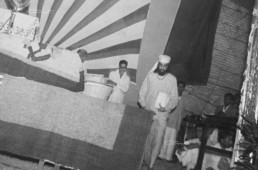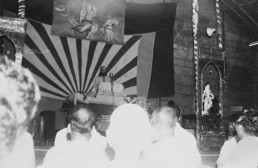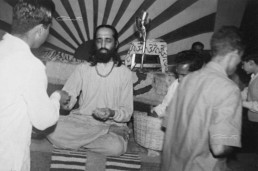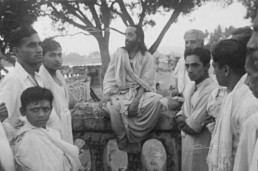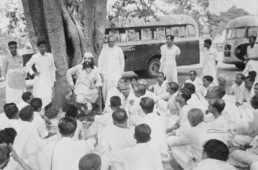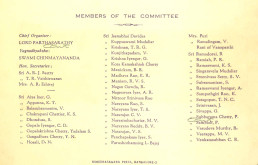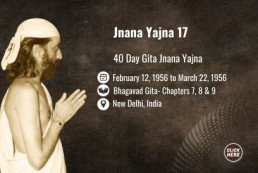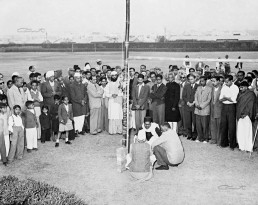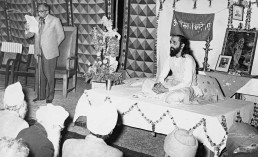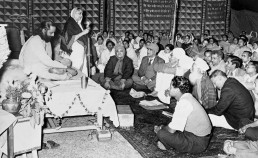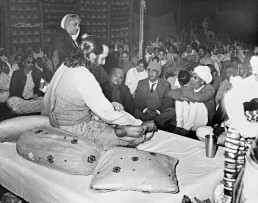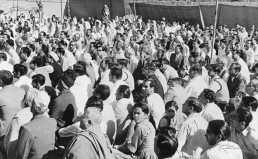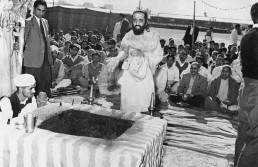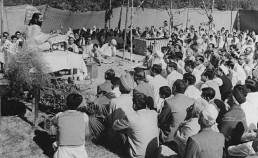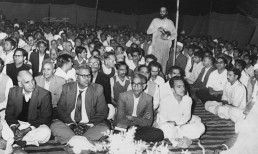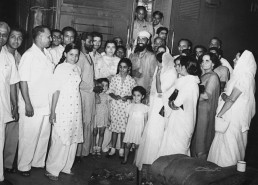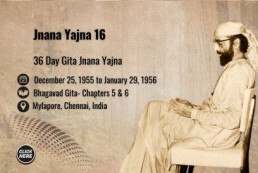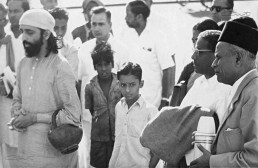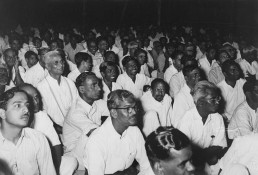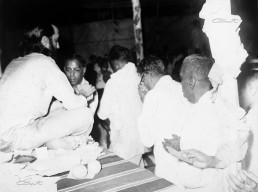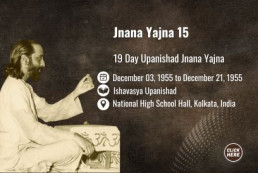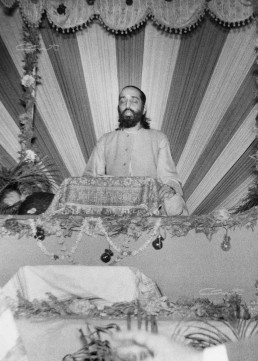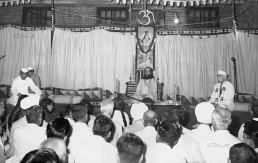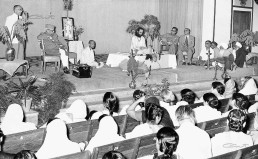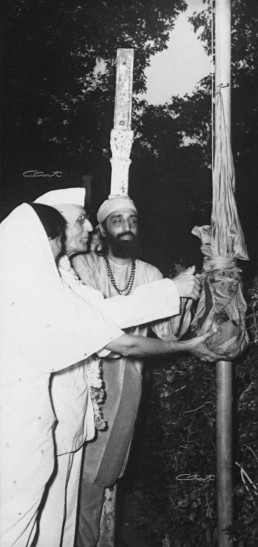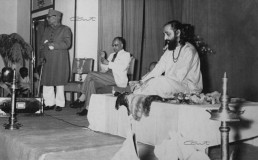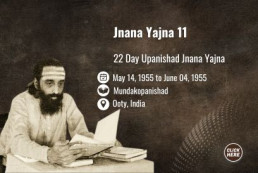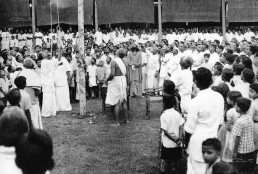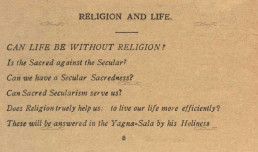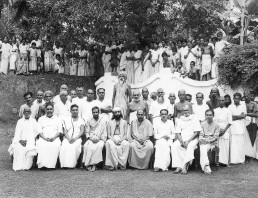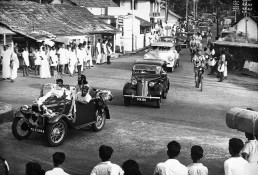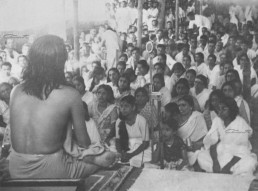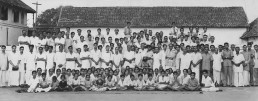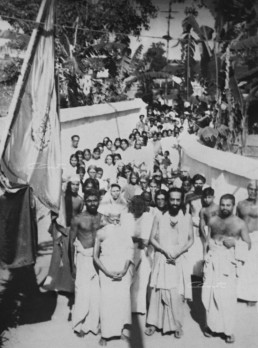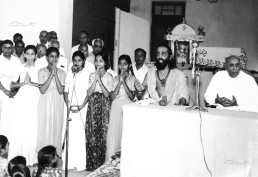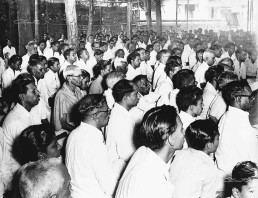Jnana Yajna 18

Jnana Yajna 18

Year & Dates:
May 10, 1956 to May 30, 1956

Yajna Topic:
Bhagavad Gita- Chapters 10 & 11

Place:
Bengaluru, India.
Everywhere, people were rediscovering that Shrimad Bhagavad Gita was not just a disconnected set of verses tucked away in the epic of Mahabharata. In Pujya Gurudev Swami Chinmayananda’s powerful voice, the Bhagavad Gita rang loud and clear. From an obscure scripture into a comprehensive manual of life, He elevated the Gita, equipping every seeker with a redefined outlook. With the first nine chapters of the holy Gita reviewed, it was time for the great Guru to uncover the Cosmic glory and Bhagavan’s cosmic form. Thus, inside an artistic and spacious Pandal in the City Institute Compound, Chaama-raaja-pete, Bengaluru, an incredible unfoldment of Gita chapters 10 and 11 took place. The yajna in Bengaluru was a colossal awakening, and the only yajna among the first 108 Jnana Yajnas where Pujya Gurudev revealed the priceless treasures of chapters 10 & 11 of the Gita.
An All-Encompassing Vision
By the thousands, crowds of about 4300 a day, poured in to be mesmerized and transported by a path of universal Knowledge, Buddhi Yoga. Pujya Gurudev exquisitely described the divine glory (Vibhuti) and then carried the massive audience of all faiths and opinions to a crescendo when He manifested the Vishvaroopa, the Cosmic Form through His illuminating words. A revolutionary eye-opener that made a massive audience expand and dissolve in rapture, it was as though Pujya Gurudev had endowed each seeker with the Jnana Chakshu (the Eye of internalized Knowledge) to behold the Indescribable. The supreme sharing of Jnana, the unbelievable outpouring of Bhakti, and the single-pointed performance of Karma through the discourses, bhajans, city-wide Akhanda Keertana processions and Gita Havana – it was a rare confluence of transcendental vision that Pujya Gurudev gave to Bengaluru.
In Admiration
Shri Ramamoorthy’s Reminiscences: It was not the oratory or the profound scholarship of Swamiji but the practical orientation which he gave to religion that captured the imagination of the mass of people. Swamiji thoroughly impressed upon the audience the practical application of religion which is the realization of an integrated personality – one in whom the body, mind, intellect and the spirit function in perfect unison and complete harmony.
Another devotee Shri M. L. Sodhi urges the need to include Vedanta as a part of school and university curriculum:
Neither during my early education nor while living overseas for technical training, I
had the opportunity to have any religious education. It is my great luck to have
attended this yagna by Gurudev! He is the right prophet for humanity “reared in an
age of unbridled science.” It would be amazing if education ministries make religious education a part of school and university curriculum under the able guidance of Gurudev to bring home this subject to the masses.
Photo Gallery

“Think,” Says Pujya Gurudev
“When a seeker comes to deserve Buddhi Yoga and practices it diligently, he comes to lift from himself all the veils of ignorance, which are nothing other than his own mental agitations caused by the cloudiness of his intellect. The self-effulgent Self is then compelled to reveal Itself in Its own Light. The lightning needs no other light to illumine it when it passes from one mass of cloud to the neighboring mountain of cloud.”
From Tyagi Magazine- March 15, 1957
That which is lying beyond the focal length of a telescope cannot be viewed by the observer even though the object may be present in a line with the axis of the instrument. In order to bring the farther object within the span of vision the observer will have to make the required adjustment in the telescope. Similarly, here I do not believe that Krishna transformed Himself into His Cosmic Form, but He only helped Arjuna to gain the necessary inward adjustment so that he may perceive what was already there evidently in Krishna. Naturally, the Lord says, “Behold”. The total world of perceivable things of all shapes and colors, are indicated in the enumeration made by the Lord in the stanza.
From Tyagi Magazine- June 1, 1957
Alone to All Alone!
Jnana Yajna 17
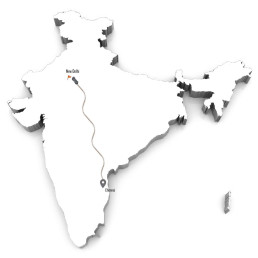
Jnana Yajna 17

Year & Dates:
February 12, 1956 to March 22, 1956

Yajna Topic:
Bhagavad Gita- Chapters 7, 8 & 9

Place:
New Delhi, India
The saffron Om flag was raised again in the open grounds of Salwan School, Rajendra Nagar. Delhi was intensely immersed for 41 days in the Bhagavad Gita Jnana Yajna by Pujya Gurudev Swami Chinmayananda. Having been the venue of His first and second Gita Jnana Yajnas where the first four chapters of Shrimad Bhagavad Gita were taught, Delhi had the fortune of a continued Gita journey. Preparing the earnest audience to explore the true goal of spirituality, the Essence of That, Pujya Gurudev launched into the question of chapter 7: “How to comprehend that limitless Infinite?” He detailed how That Highest can be realized and lived practically as all-knowing wisdom.
Offering Knowledge Imperishable
Bringing out the sheer Bliss of Bhagavan’s words, Pujya Gurudev laid out the way to fix the mind on the Imperishable always until death. He highlighted Bhagavan’s promise to one who fixes Him as the supreme goal. The euphoria of those discourses overflowed in all the accompanying features of that Jnana Yajna. Devotion sweetened introspection when the young children from the Chinmaya Children’s Welfare Centre of the Rajendra Nagar branch of Chinmaya Mission sang bhajans and performed the Radha Krishna dance to delight Pujya Gurudev and the audience on the concluding day. Further, the reverberating Mahamantra Japa, the Akhanda Kirtans, and the 10-mile Kirtan-on-wheels led by Pujya Gurudev were also soul-stirring. The most significant time was when hundreds of people chanted the verses of the three chapters they had just studied as they offered their aahuti during a four-day Gita Havana. Pujya Gurudev had advised Gita chanting as the main offering during the Havana ceremony of the Gita Jnana Yajnas. Truly, Knowledge applied and practiced with wisdom was a purifying offering in that Gita Havana.
In Admiration
Bharat Ram – A good many of the listeners have acquired a new regard for the Indian sages and the spiritual heritage of this country. Swamiji is satisfying an urgent national need – the need for raising the moral standards of conduct which is more important than material standards of comfort; for without the former, the latter become a source of misery rather than of happiness.
Photo Gallery

“Think,” Says Pujya Gurudev
The pearls in the necklace are necessarily uniform and homogeneous and its thread is generally unseen and passes through the geometrical core of every Pearl that holds the big and the small into a harmonious wreath of beauty. Again, the substance with which the pearls are made is totally different from the constitution that goes to the makeup of the thread. Similarly the world is constituted of an infinite variety of names and forms which are all held together by the Spiritual truth into a complete whole. Even in an individual the mind, intellect, body, each different from one another can harmoniously work and unitedly give the music of life for each individual because the same conscious principle works through all these different and varying matter envelopments.
From Tyagi Magazine- Sep 15, 1956
I am standing on the floor of my house; the house is supported by my piece of land; the land is protected by the Delhi corporation; Delhi is supported by India; India is supported by the World; the World is supported by water; the waters of the ocean; water is held in positions by the atmosphere; the atmosphere is a part of the planetary system. The universe stays in space, and this space rests upon the “concept of space” that is in our mind. Mind gets its support from the judgment of the intellect. Since the decision of the intellect is known and realized by the consciousness in us, the spiritual entity is the ultimate support for the entire jagat.
Tyagi Magazine- Sep 15, 1956
Prepared for Life’s Final Challenge?
Jnana Yajna 16
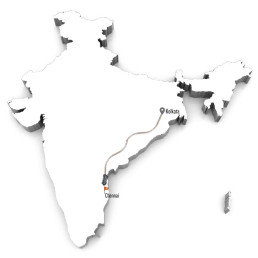
Jnana Yajna 16

Year & Dates:
December 25, 1955 to January 29, 1956

Yajna Topic:
Bhagavad Gita- Chapters 5 & 6

Place:
Mylapore, Chennai, India
The cozy square before the Venkatesa Perumal Temple, Mylapore had a spacious Pandal on the 24th December of 1955. For the next 35 days, that square overflowed with more than 3800 people of all ages. They sat or stood anywhere in rapt attention – even perched on walls and in cars, where they could catch the words from a loudspeaker. Every evening for two hours, from 6 pm, Pujya Gurudev Swami Chinmayananda carried them to a place of an immortal discussion, to the life-altering wisdom of Bhagavad Gita Chapters 5 & 6. Starting with the opening question of Arjuna in chapter 5, “Renunciation of action or participation in action – Which is nobler and greater?” Pujya Gurudev traced the path of elevating action from the desired to the desireless. The culmination of this serial process of evolution would then be perfect, meditative silence elaborated in chapter 6.
Metaphors to Meditate On
To explain this subtle thought progression of the Gita and hold the attention of about 4000 listeners all at once, Pujya Gurudev did what had become His hallmark as a Master Teacher. He picturized the message: the reed tossed by the waves, the lighthouse that stood strong, the sunlight scattered by a prism, the skilled rider who mounted a wild horse – such metaphors made a lasting imprint.
When Pujya Gurudev concluded His discourses and distributed the Vibhuti from the Gita Havan that had been performed in the last part of the yajna, over 5000 people chanted “Om Namo Narayanaya, Om Namah Shivaya, Om Namo Bhagavate Vasudevaya” surcharging the area with sheer divinity. Dedicating that resounding success at the Lotus Feet of His Param Pujya Guru, Swami Tapovanam, Pujya Gurudev moved to His next yajna, untouched by fame like the lotus leaf that He described in Gita, chapter 6.
In Admiration
Sulochana Menon while emphasizing the compassion exhibited by the Master, says “We had the unique fortune of having amidst us a teacher, one who looked over the wall and found it no less entrancing but one who, out of his compassion, returned to tell the story to those left behind and help them over the wall. Swamiji did not promise his audience change overnight, as if by the touch of a magic wand. He led the audience from truth to truth by his scientific approach to each question.”
Photo Gallery

“Think,” Says Pujya Gurudev
An individual who has discovered for himself a sufficient amount of tranquility in which nothing can dare disturb him anymore, is certainly one who has plumbed the depths and touched the bottom. A reed on the waves will be tossed up and down by the waves, but a light-house built upon the firm rocks alone remains firmly upright and changeless, allowing even the stormy waves to exhaust their anger at its feet. Krishna’s argument is thus logically tight when he declares that a mortal among us who can maintain his equanimity under all conditions as explained in the foregoing stanzas is indeed one who has contacted the Divines and the Eternal in himself. ‘He indeed rests in Brahman.”
From Tyagi Magazine- June 1, 1956
In the Vedantic textbooks, Bhajan is the attempt of the Ego to pour out itself in an act of devoted dedication towards the Principle of Reality whereby it successfully invokes the experience that lies beyond the noisy shores of the mind-intellect. One who does this invocation (Bhajan) of the Self, and naturally, gets himself merged in that awakening, is declared here by the teacher in the Geeta as belonging to the highest type of meditation.
From Tyagi Magazine- Sep 1, 1956
Is the Key to True Peace Hidden in Detachment?
Jnana Yajna 15

Jnana Yajna 15

Year & Dates:
December 3, 1955 to December 21, 1955

Yajna Topic:
Ishavasya Upanishad

Place:
National High School Hall, Kolkata, India.
He had not even begun His Upanishad Jnana Yajna, and the crowds were already surging. The organizers wondered if they had to move the venue outdoors in spite of the winter weather. Much was the eagerness of the audience in Calcutta (now Kolkata) who had waited to hear Pujya Gurudev Swami Chinmayananda. So, on the evening of December 3, 1955, when He was welcomed at the brightly decorated National High School Hall, the joy was palpable in that huge gathering.
Revelations with Laughter
In his welcome address, Sri G.M. Khemka, President of the G.K. Khemka Charity Trust said, “These Jnana Yajnas of Swamiji merely denote a sacrificial offering of our ignorance and false values into the Fire of Knowledge with the glory of the Divine. His lectures will prove a treat to the faithful, a challenge to the non-believer, and an irresistible call to the intelligent. Swamiji’s time is precious since he is in demand everywhere, and it is therefore our privilege to have got him to address us.”
True to those words, Pujya Gurudev enthralled all seekers for eighteen days. Explaining how Ishavasya Upanishad was an unparalleled Mantropanishad containing declarations that were versified as mantras, He taught the abstract and profound through tangible light-hearted examples. The “ghost in the post,” that He dramatized brought both great laughter and clarity to the audience in Calcutta. From perceptions through senses to the All-pervading Truth, from learning to look within and without, from avidya to vidya, Pujya Gurudev immersed the people of Calcutta in the harmony of action and knowledge that Ishavasya Upanishad revealed beautifully.
In Admiration
Reflecting on Gurudev’s teachings, Shri Sampath Iyengar of Kolkata observes that they form a harmonious blend of the old and the new, catering to the inquisitive nature of the modern mind. -“Even sacred sayings cease to command acceptance from a ritualistic mind, unless they can convince the intellect. It is in this endeavor to carry conviction to the thinking men that Swamiji excels – this method of treatment, combined with lucidity and severe logic.”
Photo Gallery

“Think,” Says Pujya Gurudev
In all his future activities, De-personalization is the secret of inspiration, and a work done under inspiration is certainly a thousand times more irresistible in its effectiveness. The secret of all enduring work lies in this de-personalization of the worker from his work. The scripture here is advocating every man of energy and activity to work tirelessly in the world in a continuous and unbroken mood of inspiration.
A long period of such activities, undertaken in a spirit of detachment, to a large extent cleanses the mind of its impurities, such as desires, attachments, hatreds, selfishness, jealousy, greed etc. such a purified mind alone can have the required intellectual temper and spiritual stability to pursue the path of righteousness through intense and high meditation.
From Ishavasya Upanishad Book
Sitting in a train that is halting at a station, the traveler looking out through the window to a moving train on the parallel line, would feel that his own train is moving. With reference to a moving factor, the motionless would look as though moving, though itself is motionless and still. When viewed from the deck of a moving boat the trees on the banks are seen moving; perceptions are always relative. Similarly, viewing the motionless Spirit of Life, from and through the world of agitations in matter, the Spirit Itself looks as though It moves, and yet, in Its real nature It moves not.
From Ishavasya Upanishad Book
Embracing Wholeness!
Jnana Yajna 14
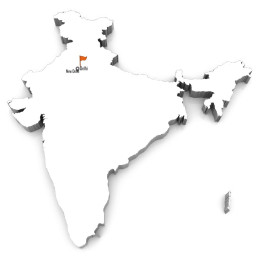
Jnana Yajna 14

Year & Dates:
October 30, 1955 to November 30, 1955

Yajna Topic:
Bhagavad Gita- Chapters 3 & 4

Place:
Delhi University, New Delhi, India.
It was the first time that the Convocation Hall in Delhi University had been transformed into a site of spiritual satsanga for thirty continuous days. Young and old had gathered enthusiastically in an academic setting to learn the Highest Knowledge from a contemporary sage. Swami Chinmayananda had already caught the attention of the intelligent youth with His call to independently estimate the Science of Religion. The way He invited them in His opening day address to “chalk out for themselves the right way of application of the sacred values in the daily scheme of their lives” showed His confidence in their ability to reflect.
Inspired Call to Action
Continuing with the Gita Jnana Yajna series that began in the Modern School, Delhi, Pujya Gurudev now launched into the uplifting verses of Chapters 3 & 4 of the Bhagavad Gita. Sharing the wisdom of Karma Yoga (Chapter 3), He emphasized on the path of right, dedicated action as the means for self-development and preparation for Knowledge. Then, with fluent excellence, Pujya Gurudev unfolded the path of greater Truth and Knowledge in chapter 4, ‘Jnana Yoga.’
A notable event that happened during the 14th yajna was Pujya Gurudev’s address during the All India Vedanta Sammelana at Amritsar. He left Delhi on the night of November 12, 1955, and traveled all night by car across 300 miles to roar to about eight to ten thousand people, especially the youth, about the importance of living Vedanta. Right after that stirring speech, Pujya Gurudev dashed back to Delhi University in time to continue His 6 pm Gita discourse in the joyful glow of the Deepavali lamps on November 13. Modeling the way to bring Gita to life, every action of Pujya Gurudev was selfless and stimulating, steeped in Knowledge.
In Admiration
A devotee of Delhi recalls, “Swami Chinmayananda’s discourses on Gita and various Upanishads are narrated in such a masterly and convincing style, that they penetrate our hearts and minds deeply and thus have a lasting effect on ourselves. The various stanzas are taken up one by one by him, and their meanings explained in detail with various present day examples in a simple and beautiful style. He sits as it were on the throne of spiritual and knowledge and distributes the flowers and honey of wisdom in handfuls.”

“Think,” Says Pujya Gurudev
The method of controlling the mind by the body is Karma Yoga, and it is fit for those who are extremely body-conscious and world-conscious. Controlling the mind from the mind is Bhakti Yoga, and it is conducive to those who are of an emotional temperament. The method of controlling the mind from the intellectual zone is called Jnana Yoga which can appeal to all intellectuals.
But whatever be the path purchased, and whatever be the type to which the seekers belong, the ultimate experience of the Spiritual Perfection gained by every one of them, at the moment of illumination, is one and the same. This is an incontrovertible fact inasmuch as the mystical literature of the world reads as though every saint has borrowed and copies from all the earlier Masters across the world!!
Tyagi Magazine- March 15, 1956, p. 28
The significance of the stanza as “a prayer to be said before food” is amply self-evident. To live we must eat. Food is an unavoidable necessity of existence. Whatever be the type of food, when one is hungry one will enjoy one’s meals. The suggestion is that even at this moment of natural enjoyment we are not to forget the great Truth that it is Brahman eating Brahman, and that during our meals we are offering to Brahman the food that is Brahman invoking nothing but the grace of Brahman. To keep this idea constantly in the mind is to get ourselves perfectly detached from the enjoyment and raise ourselves to a greater and endless beatitude which is the reward of the Super-manhood.
Tyagi Magazine- April 15, 1956 V. 24 Ch. 4, p. 13
Have courage to follow Dharma?
Explore the enigmatic realm of divine incarnations, a timeless mystery that has captivated the hearts of seekers throughout the ages. Discover the sacred promise made by Lord Narayana to secure the victory of righteousness, and unravel the profound significance of divine intervention as a guiding light in times of moral crisis. Join us in this exploration of spirituality and delve into the eternal wisdom that reveals the divine’s role in upholding righteousness across the ages.
Jnana Yajna 13
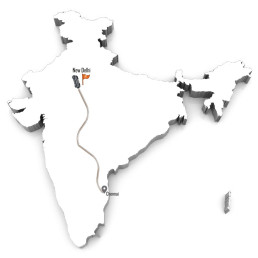
Jnana Yajna 13

Year & Dates:
September 18, 1955 to October 28, 1955

Yajna Topic:
Bhagavad Gita- Chapters 1 & 2

Place:
Modern School, New Delhi, India.
The words, “Gita Yajna ” were on a placard at the gate. A huge, artistically constructed shamiana on the front lawns of the Modern School, Barakhamba Road, New Delhi, stood ready to welcome all seekers. An eminent artist of Delhi had created a strikingly lifelike oil painting of the famed Krishna- Arjuna- Samvaad to serve as the stage’s backdrop. In such a captivating atmosphere, on the evening of September 18,1955, His Holiness Swami Chinmayanandaji of Uttarkashi began His first Gita Jnana Yajna addressing a vast crowd of Delhi’s elite thinkers. In an incredibly methodical way, He summarized the story of Mahabharata and highlighted the way Bhagavad Gita was the essence of the Upanishads made directly relevant and practically applicable to a seeker in distress.
Gita’s Glory Unveiled
Describing Chapter 1 as the case history of the typical Arjuna-disease, Pujya Gurudev made the audience reflect deeply on the anxiety-ridden, shattered personality which results from confusion regarding duties in life. Then, as He uncovered the wealth of philosophy contained in the second chapter of the Gita, the “extremely efficient Krishna-cure for the soul-killing Arjuna disease” was awe-inspiring. Every word that Pujya Gurudev uttered during those enlightening discourses were published in ‘Tyagi,’ a fortnightly magazine that was first launched on September 1, 1955. The non-sectarian, non-denominational spiritual magazine which also carried philosophical articles by other writers, had the sole rights to imprint the message of Gita in the world psyche in a never-before experienced way. Word-by-word, verse-by-verse, the most sublime and yet practical song of Bhagavan was shared from that Yajna Shala in Delhi. A matchless Gitacharya reintroduced Bhagavad Gita in a historic manner.
In Admiration
Shri Panna Lal Sen Gupta, who accidentally found himself at Pujya Gurudev’s Gita Jnana Yajna recounts: Before this I had heard discourses on Gita here and there and I had also tried to understand it by reading commentaries. But that did not unfold to me the inner meaning and potentialities of its shlokas. Swamiji’s inimitable way of speaking and clear exposition of shlokas struck me with wonder. It has been possible for me to realize from these Yajnas that by practicing the teachings of Gita, faithfully and scrupulously, one can certainly enlighten himself to the ultimate supreme Reality.

“Think,” Says Pujya Gurudev
The Gita Sankalpa Vakya is a beautiful statement of pregnant words conveying a wealth of detail regarding the very text-book. Srimad Bhagavad Gita has been considered here as Upanishad. Nay, each chapter in the Gita is considered as an Upanishad, and among the eighteen Upanishads, together constituting the Divine Song, here we end the First of them, entitled “the Yoga of Arjuna’s Despondency,” These chapters are called Upanishads because these are declarations concealing such deep significance that a hasty reader will miss their full import unless he gives long and intense meditation over this suggestive wealth of meaning that lie concealed behind the simple looking stanzas of the Gita. Just as in the Upanishads, here also we need the help of a sympathetic teacher who can train us in the art of opening the seven-hundred lockers in the treasure chamber of the Gita.
From Tyagi Magazine- Nov. 11, 1955, P. 25
Thus standing between the two forces, the good and the bad, arrayed for a battle to death, Arjuna surrendered completely, to the Lord, the subtler discriminative intellect, the charioteer, who held the five senses back and halted the body in a perfect stand-still. The stunned and confused ego-Arjuna-when it totally surrenders to Krishna, the Lord with a smile reassures the Jiva of its final victory, and declares the entire message of spiritual redemption, the Gita.
From Tyagi Magazine- Nov 15, 1955, P. 32
The Source of Sorrow
Explore the Bhagavad Gita’s timeless wisdom as Lord Krishna dispels Arjuna’s unnecessary grief. Understand why wise individuals don’t mourn for the departed or the living and embrace the transformative teachings that bring solace and understanding.
Jnana Yajna 12

Jnana Yajna 12

Year & Dates:
June 12, 1955 to July 02, 1955

Yajna Topic:
Vivekachudamani

Place:
Chennai, India.
With every yajna, Pujya Gurudev Swami Chinmayananda adapted the format, technique, and topic to bring about the maximum benefit to the maximum number of people. In His quest of awakening people to their spiritual essence, the daring way in which He taught eight major Upanishads in the first ten Jnana Yajnas made people sit up. They wondered, “How can we reconnect with the vibrant, scientific core of Hinduism as Swami Chinmayananda explained it and reconstruct ourselves?” A Master Teacher that He was, Pujya Gurudev recognized that the curiosity of the people was kindled. However, the foundation had to be strengthened for the flag of Sanatana Dharma to fly high. So, when He came to Chennai for the 12th Jnana Yajna, He planned it to be a mobile Yajna, a first of its kind.
Spirituality, Widespread & Mobile
Aiming to reach the maximum, Pujya Gurudev spoke in three Yajnashalas at Egmore, Saidapet, and T’Nagar, three key areas of Chennai (then Madras). For the topic, He chose select verses from “Vivekachudamani,” a detailed and beautiful Prakarana Grantha (introductory text) written by Adi Shankaracharya. While educating the audience about the fundamental concepts of Vedanta, Pujya Gurudev had a greater objective. The 12th Jnana Yajna in a ‘mobile format’ facilitated the training of the members of Chinmaya Mission to be competent enough to hold street-corner meetings on the guiding principles of Hinduism across the city. Indeed, that far-reaching vision of spreading Vedanta shaped the motto of Chinmaya Mission: “To give maximum happiness to maximum people for maximum time.”
In Admiration
Miss Padmini of Chennai shares about the impact the Mobile Yajna has on her: This Yajna served further to strengthen my conviction that Vedanta is not a mere Utopian dream, but a practical Reality. Without religion life has no meaning. With religion it has both a meaning and a purpose. Our duty is to attain that perfection or Godhood, where alone one can have lasting happiness.

“Think,” Says Pujya Gurudev
The ocean does not put a ban upon the quantity of water that you can carry from it; the limitations are the limitations of your own pot. The sun does not ration its light from house to house or from room to room, but it is the walls that deny the entry of sunlight into a room. The river flows; everything depends on the canals you can cut to take its waters to your land. Similarly, the Guru, living in perfection, gives out knowledge in the language of his own intimate experience, and it is up to the individual seekers to get for themselves as much benefit as they can.
From Vivekachudamani Book, p. 46-47
A spiritual seeker has a healthy attitude towards things, and he keeps a balanced relationship with everything around him in life. He loves all and he fulfills his duties towards them. But he never allows the world of relationships around to bind him and loot him of his freedom to grow. He keeps ample elbow room to wage war against his own lower nature. Such an individual, intelligently organizing his connections with the world will certainly run fleet-footed towards the Goal to enter the state of freedom and experience supreme Vishnu-hood.
From Vivekachudamani Book, p. 126
Eternal Bliss Beyond Maya’s Veil
Jnana Yajna 11
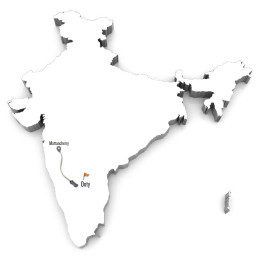
Jnana Yajna 11

Year & Dates:
May 14, 1955 to June 04, 1955

Yajna Topic:
Mundakopanishad

Place:
Ooty, India.
“What is That, my Lord, knowing which all these become known?” enquired the great householder Shaunaka after he respectfully approached Sage Angiras. So opens Mundakopanishad. Describing and detailing the thought-provoking Upanishad in his 11th Jnana Yajna, Pujya Gurudev Swami Chinmayananda prompted the audience in Ooty to reflect and evolve. An important outcome by the end of this 21-day yajna was the publication of the “Mundakopanishad” book which compiled all of Pujya Gurudev’s commentary taught during both the second Jnana Yajna in Chennai and the 11th yajna in Ooty. In His introduction to the book, Pujya Gurudev wrote: “The very concept of Jnana Yajna was conceived by me in a moment of love, and these Yajnas were worked out in an atmosphere of love depending upon love, demanding only love, and the workers working merely for love.”
Yajnas in Lasting Pages
Throughout the ten Jnana Yajnas that had awakened people to the glory of their Vedic heritage, Pujya Gurudev had envisioned with loving foresight that the word should spread far and wide. Hence, He systematized the reflections of every Yajna in the ‘Yajna Prasad” booklets that were distributed first free and then at nominal cost to thousands of seekers. It is an incredible feat how Pujya Gurudev would spend countless hours to dictate and record the scriptural teachings after His discourses for the world to keep reaping the benefits of those priceless reflections. The earliest ‘Yagna Prasad’ booklets sowed the seeds for his prolific writing that gave rise to “Chinmaya Publications.” To keep the spark of Awareness alive in all our pursuits in life, Pujya Gurudev gifted us with the precious pages, year after year. Like the famous imagery in Mundakopanishad, the sparks from the Vedantic fire that He kindled still glow in the pages of His Prasad booklets, books, and all His words.
In Admiration
Karthiayini G Nayar who was blessed to listen to Pujya Gurudev’s discourses in Ooty shares these impressions:
Listening to Swamiji speak, one would feel self reliant, self confident, bold enough to face any crisis knowing that everything in the world is ephemeral. An knowing what is good company or Satsang, one would not enjoy the company of ordinary people where the conversation is often about irrelevant and flimsy matters
Photo Gallery

“Think,” Says Pujya Gurudev
Let us try an example: A driver at the steering-wheel, while driving, cannot be run over the same car.The moment the driver leaves his seat and rushes to the front of the car, since the car has no motion of its own, it stop and so cannot knock him down and run over him! Similarly, the Atman, the dynamic power behind the mind that vitalises the mind- that makes it possible for the mind to grasp things- cannot be grasped independently by the mind. Should the mind grasp the Reality, it should stand apart from the object it so grasp: and the moment the mind divorces itself from its connections with the Atman, it becomes a dead inert stuff which cannot grasp any idea anymore. Hence we say that the Supreme is ungraspable.
From Mundakopanishad Book
The Word ‘diligently’ (niyatam) is very pregnant. It does not merely suggest a faithful and blind performance, but insists upon a regular practice which is continuous, intelligent, fresh and cheerful. Rituals followed as a routine lose all their potency.
A routine in itself cannot constructively re-create a developed human personality. It is only a deliberate intelligent training of the head and heart of an individual, grained through diligent abhyas that can bring about this desired effect. A dull habit, or an inert routine pursued under the blind force of a dead faith is ineffectual and quite undesirable as a measure in the spiritual revival of an individual.
Rituals in themselves cannot and will not lead a seeker to his goal. An act, however noble, cannot, in its result, procure the Eternal, the act being itself a finite one.
From Mundakopanishad Book
The Light beyond light!
Explore the mystical realm of Mundakopanishad as we decode its enlightening verse that challenges our understanding of light, fire, and divinity. Witness the symbolic significance of aarati and the flame, realizing how our attempts to see the divine mirror our journey from the material to the infinite.
Jnana Yajna 10
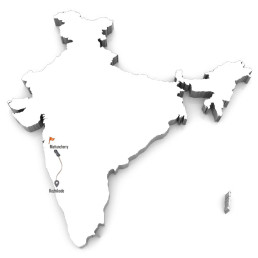
Jnana Yajna 10

Year & Dates:
April 14, 1955 to May 04, 1955

Yajna Topic:
Kenopanishad

Place:
Mattancherry, India.
In the diverse crowd, the youth outnumbered the old. They came eagerly, forgetting for 21 days, the thrills of their usual pastimes like sports, cinema, or fun get-togethers. Women of all ages hurried to the front rows, knowing that they too belonged in the Vedantic discussions. This was another cornerstone achievement of Pujya Gurudev – to open the portals of Vedanta to the young and old, to women as much as men. From a varied audience of 300 seated on the sand-floored yajnashala on the inaugural day to 1500 spilling over extensions added on the sides in a week, the scene was getting familiar.
A Charismatic, Universal Appeal
The trend set in the very first yajna in Pune was becoming the norm by the tenth Jnana Yajna in Mattancherry, Kerala. Hearing Pujya Gurudev Swami Chinmayananda reintroduce the ancient truths of Hinduism in a relatable, catchy way, the audience understood the great relevance of scriptures in daily life. From the scholars to the simple-minded, each one resonated with Pujya Gurudev’s way of expression. The scholars were astounded at His breadth of scriptural knowledge. The scientists, businessmen, lawyers, and administrators were surprised at the way He kept abreast of latest advancements, economic, and societal changes. The women, whether at home or office, were convinced that Pujya Gurudev was their cherished spokesperson. The youth were captivated by His charisma, his fearless, sharp wit, and His approachability. The old were relieved that Hinduism had found its commanding voice. His striking similes, detailed examples, dramatic stories, and animated jokes – His every expression with undiluted Vedanta touched hearts and transformed lives. He encouraged, instructed, comforted, and uplifted – In Mattancherry too, He was the center of attraction, as He let the verses of Kenopanishad flow in and through the receptive minds of His adoring audience.
In Admiration
Mrs. Janaki Menon’s impressions of the Mattancherry Yajna:
This 21 days Yajna was a milestone in the spiritual progress and awakening of the town. People who once prided themselves upon their atheistic and materialistic beliefs had suddenly become ardent supporters of Swamiji and his methods. Unlike the teachers of the old, Chinmaya examines the Vedas and the Upanishads, which form the foundation of Hinduism, in the cold light of scientific reasoning, and with dispassionate and critical analysis their validity is tested.
Photo Gallery

“Think,” Says Pujya Gurudev
A salt-doll tied to a string and dipped into the ocean will not come back when pulled up to report the depth!! The doll gets melted into the very form of the ocean; the salt-doll was ever the ocean; it was born from the ocean. But it had for a period an identity of its own and a form. But once having reached the bosom of its own “Nature” and remaining there for a time, it becomes the very ocean that it Eternally was!!
That is, the doll-ego which exists as a superimposition upon Truth, Pure Salt, assumes for a time certain false forms and names. But when actually at last it entered the mass of its own nature it got merged there with its own svaroopa.
From Kenopanishad Yajna Prasad, p. 153, 154
All efforts in meditation are only for the beginner; a swimmer drowns and gulps down water only during the first days of his learning himself to float in water! Having mastered his art, a rope dancer is bored to repeat night after night his acrobatic and feats of balance although he must have had his own falls and bruises, thrills and joys, during his attempts at mastering his art. Similarly, a meditator may have a struggle to keep his mind in balance and in peace in his early attempts but ere long, as he gains more and more confidence and balance, he shall with a joyous ease float into himself, and there, in an effortless effort meet face to face with the One, his own self.
From Kenopanishad Yajna Prasad, p. 195
Chant for an Alert, Vigilant Mind
Unlock the secrets of success with the powerful chant of sahanaavavatu. This enlightening excerpt from Kenopanishad talk series from Houston, 1981 explores the deep meaning behind the invocation verse or shaanti paatha, guiding both the teacher and student toward an alert and vigilant state of mind. Join us on this spiritual quest for knowledge, wisdom, and ultimate success.
Jnana Yajna 9
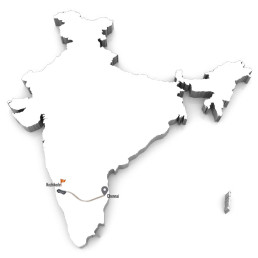
Jnana Yajna 9

Year & Dates:
March 6, 1955 to March 29, 1955

Yajna Topics:
Aitareya Upanishad

Place:
Kozhikode, India.
In Kozhikode, during the 21-day long ninth yajna, Pujya Gurudev extolled the glory of Aitareya Upanishad, bringing out the essence that “Consciousness is Brahman.” People from all walks of life were shown the grand vision of a spiritual unity above all visible differences.
Notable was the discipline in the growing audience who rushed out of their homes to be in perfect time every evening for Pujya Gurudev’s masterly presentation of the thought-provoking scripture. The punctuality and discipline that Pujya Gurudev personified was making a mark on the yajna audiences everywhere. Along with timeliness, the sense of sacredness for the Hindu rituals was also being revived.
Discipline and Devotion
The Akhanda Kirtan with hundreds chanting with faith and fervor, the orderly and spectacular procession of people on foot, in cars, trucks, and cycles energizing the atmosphere of Kozhikode – the glorious vitality of a disciplined Hindu outlook was evident. As in all earlier yajnas, when Pujya Gurudev walked among the seated devotees sprinkling Ganga waters from Gangotri, it was an incomparable blessing that purified all. The people were also entranced by the five-day Mahamrtyunjaya Havan that had concluded earlier. Carrying the sacred ashes from the Havan-kund, a most enthusiastic crowd accompanied Pujya Gurudev to Guruvayoor in eleven buses after the yajna concluded. Chanting the Tryambaka mantra, hundreds of devotees immersed the Havana’s ashes in the Guruvayoor temple tank; they took the Avabhruta Snanam, a sacred bath and entered the holy temple for a great darshan of Lord Krishna as Guruvayoorappa. It was an extraordinary experience of devotion, so different from a noisy worship, all because Pujya Gurudev could instill a devoted sense of discipline, both inside and outside the Yajna Shala.
In Admiration
K Vasudevan Nair records his early memories of what kept a varied audience engrossed in Pujya Gurudev’s talks: His audience generally were not merely retired officials and old men and women without much work or a vocation. Energetic youth who hurried from their officers to the Yajna Shala, without even taking their evening tea, lest they miss the introductory remarks of the Swamiji that day and lost the trend of the discourse, young students who gladly kept away from their football, tennis and other games, Cinema fans who willingly stayed away from theatres etc., besides practicing lawyers, half-starved teachers, profit-loving merchants and men and women from all walks of life vied with each other in being punctual at the Yajna Shala before Swamiji took the Adhyaksha Peetham. What is the secret behind the great Swami Chinmayananda and his hold over a large concourse of people? The discourses on tough subjects like the Upanishads and the Gita when treated by him in his simple but masterly style, combined with his ready wit and sparkling humor, enable a man or woman with average intelligence to understand and digest them. The fire in us is kindled by Swamiji. The ball is set rolling, we ponder over things.
Photo Gallery
The devotees, including the Maharaja of Cochin, eagerly await to receive Gurudev with Purna Kumbha
Swami Chinmayananda's comment behind the picture "trying to recognize" the Maharaja of Cochin (with folded hands on the left) as the Chief Guest with welcome party holding Purna Kumbha to mark the beginning of Swami Chinmayananda's 9th Yajna

“Think,” Says Pujya Gurudev
In a portion of the city, when we want to create a park, the contractor and his creative activity are limited by the type of people that are to come and seek their recreation therein. If children are to visit, he has to create the park with the fittings common in a children’s park; if youngsters are to come to play and sweat, the contractor has to lay out fields for cricket, hockey and football, with facilities for other vigorous games, such as basket-ball, volley-ball, tennis and badminton; if old, retired people are to use the park there are to be plenty of trees and comfortable chairs in which those superannuated men can sit round and air their views and their senile bodies! Similarly, the Lord, the Creator…the Supreme, conditioned by the total Vasana’s in the Cosmos…is not free to create a world for the better or the worse, but He has to serve the totality as a contractor would his principle.
From Aitareya Upanishad Yajna Prasad Vol. 1, No. 2, p. 20,21
Similarly, in a scriptural discourse between the Guru and Shishya, the teacher sometimes flies to a point very much high where a sincere cannot easily reach in one single flight; and yet, the teacher, with the instinctive love of a mother-bird, will encourage the inner personality of the student to fly up slowly and steadily to the peak where the master stands. At rare occasions the teacher, in all love, flies back where the disciple, in sheer despair, has fallen down in intellectual exhaustion. At such moments the Guru prescribes a dose of Upasana to revive the pilgrim to greater exertion and more vigorous endeavor.
From Aitareya Upanishad Yajna Prasad Vol. 1, No. 2, p. 15
Consciousness Unveiled: “Tat Tvam Asi”
Uncover the profound teaching of “Tat Tvam Asi,” guiding you on a journey from the ego-driven existence to the essence of consciousness. Experience the joyous realm of self-discovery in this enlightening exploration of Upanishadic wisdom.

